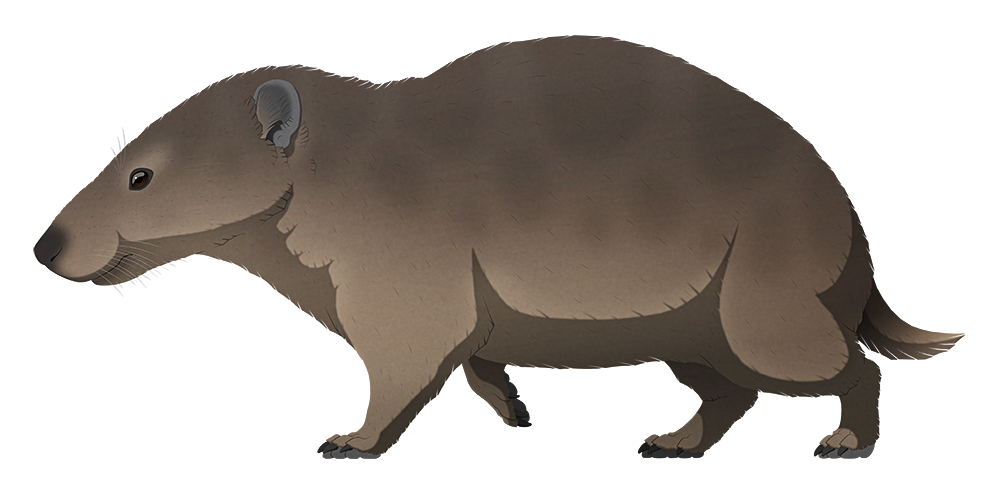Back during the early Eocene, around 50 million years ago, global temperatures were much warmer than today, and in North America tropical and subtropical rainforests extended as far as Alaska.
And one of the most abundant animals in these balmy ecosystems was a small mammal called Hyopsodus, an early type of ungulate that was probably part of the perissodactyl lineage, closely related to the ancestors of modern horses.
Many different species of this genus have been discovered, ranging from rat-sized to cat-sized. Remains of Hyopsodus account for up to 30% of fossils in some locations, with tens of thousands of specimens known – although most of them are isolated teeth and jaw fragments.
(The illustration here depicts Hyopsodus wortmani, a 30cm/12″ long species which lived about 50-46 million years ago across the Western and Southern USA.)
More substantial skeletal remains of this little mammal are very rare, and initially seemed to show a long weasel-like body that resulted in Hyopsodus being given the nickname of “tube-sheep”. But more recent specimens have given us a better idea of its proportions, and it wasn’t really tubular at all. Instead it was probably built more like a cavy or a hyrax, with a more chunky body and a spine held more strongly curved.
Its teeth suggest it was a generalist omnivore, probably mainly eating a mixture of vegetation, fruits, seeds, insects, and occasionally smaller animals, and while its limbs were proportionally short it was likely still quite an agile fast-moving animal. It also appears to have had some ability to dig, and may have sheltered in burrows similarly to modern groundhogs.
But one of the most surprising things about the “tube-sheep” comes from studies of its braincase via CT scans of its skull. Its brain was unusually large for its size, and had enlarged areas associated with good senses of smell and hearing – and notably one sound-processing region (known as the inferior colliculus) was developed to a degree similar to those seen in echolocating animals.
Analysis of its ear bones suggest it wasn’t highly specialized for echolocation like bats, but may have still been capable of a more basic shrew-like version, using it for close-range navigation.

